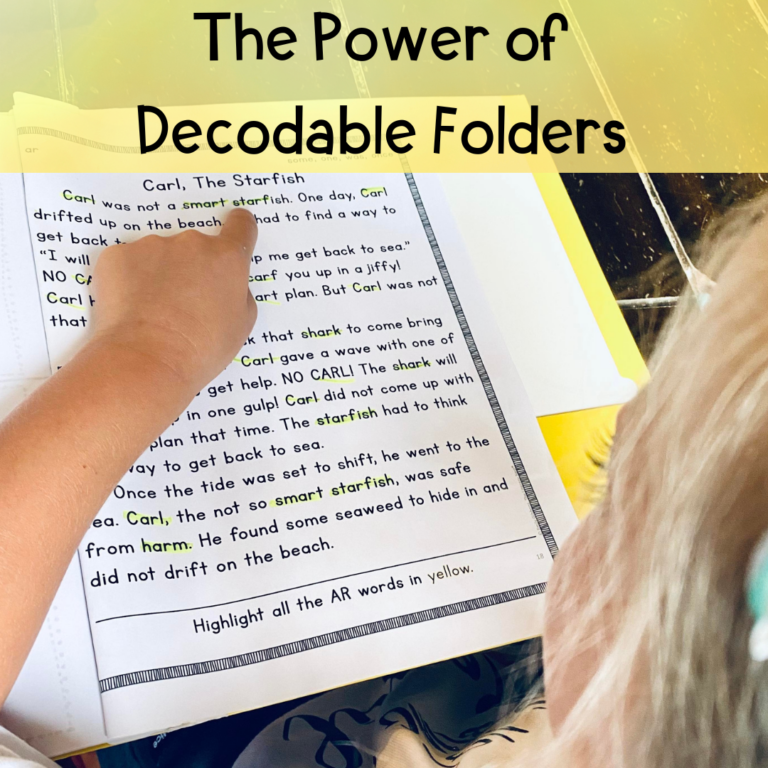
Share This:
Have you ever started a book and it was so full of theory that you didn’t know how it would ever trickle down to authentic practice? The ones where your eyes go wobbly and you find yourself checking your phone 5 times each page? I can say, with complete and utter certainty, that this will not happen with my latest book review. How to Plan Differentiated Reading Instruction is a primary reading teacher’s dream book. I’ve yet to find another book that has the classroom teacher so squarely in mind.

Literally every single reading teacher who teaches students K-3. Yup, all of you. The newbies and the veterans, the novices and the experts. This book is aligned with the Science of Reading. If you are moving away from balanced literacy and guided reading, you need this book.
You’ll love hearing that leveled texts are NOT the star of small group. Small group reading has been dominated by leveled texts for decades. When you are learning about the Science of Reading, it can be challenging to know what to do if you aren’t reading those books in your small group. Walpole and McKenna are here to guide us.
This isn’t a book that is so fully of theory you can’t see how it will work in your own classroom. Instead, this book is designed for busy teachers who don’t have a lot of time. Their small groups are all 15 minutes and can have up to 7 students in them. When I read this, it was like coming up for a breath of fresh air. We have too many kids and not enough time, and sometimes author don’t get that. I felt the entire time that Walpole and McKenna truly understand teachers.

I remember when I was a classroom teacher how I would try to fit everything within my 20 minute of small group—word work, new skills, reading, writing, practice. EVERYTHING. With Walpole and McKenna’s format, the beauty is the simplicity. Each group only focuses on a few things. The prep is minimal, so you can spend your time designing quality whole group lessons.
Teachers put their children into 1 of 4 groups: phonological awareness and word recognition, word recognition and fluency, fluency and comprehension, or vocabulary and comprehension. Each group includes only a couple of different activities. For example, if you have students in a group for word recognition and fluency, the tasks are to practice high-frequency words, segmenting and blending, practicing words, and reading decodable texts. We know teaching reading is rocket science, but Walpole and McKenna make it feel like the stars are within reach.
The resources. Oh. My. Gosh. This book is so full of ready-to-copy resources! I knew that it was a good book before reading it, because it had been mentioned time and time again in the Science of Reading community. But I had no idea that they have literally planned out almost all your small groups for you! They have dozens of decodable texts! I really like their decodables because they start with just words with that pattern before giving you sentences or a paragraph to read. It’s the perfect length for a small group. It’s not just decodables though. The resources are too many to count.

My only hesitancy with this was that it leaves out a lot of things I would do in a small group. That being said, I’m an interventionist and I’m not the target audience for this text. I think of all the cool tricks and tips I’ve learned along the way, and I’m bummed I wouldn’t be able to do them with this setting. However, I understand their need for efficiency. Teachers don’t have 30 minutes like I do. I think if an entire building used this structure, they would see incredible growth in their students.
I sincerely believe that every K-3 teacher needs this book on their shelf. It won’t sit there long. Instead of collecting dust, you will find yourself highlighting, copying, and referencing. Prepare yourself to buy this book every 3 years because you’ll be using it until it falls apart. This text is truly that good!
Ready to buy? Click here!
Share This:

Savannah Campbell is a K-5 reading specialist. She has taught her entire 12-year teaching career at the school she went to as a child. She holds two master’s degrees in education from the College of William and Mary. Savannah is both Orton-Gillingham and LETRS trained. Her greatest hope in life is to allow all children to live the life they want by helping them to become literate individuals.

Savannah Campbell is a K-5 reading specialist. She has taught her entire 12-year teaching career at the school she went to as a child. She holds two master’s degrees in education from the College of William and Mary. Savannah is both Orton-Gillingham and LETRS trained. Her greatest hope in life is to allow all children to live the life they want by helping them to become literate individuals.
Feeling overwhelmed with all the terminology out there? Want to know the key terms all teachers need to teach phonics? In this FREE Rules of English cheat sheet, you get a 5 page pdf that takes you through the most important terms for understanding English—you’ll learn about digraphs, blends, syllable types, syllable divisions, and move. Grab today and take the stress out of your phonics prep!
